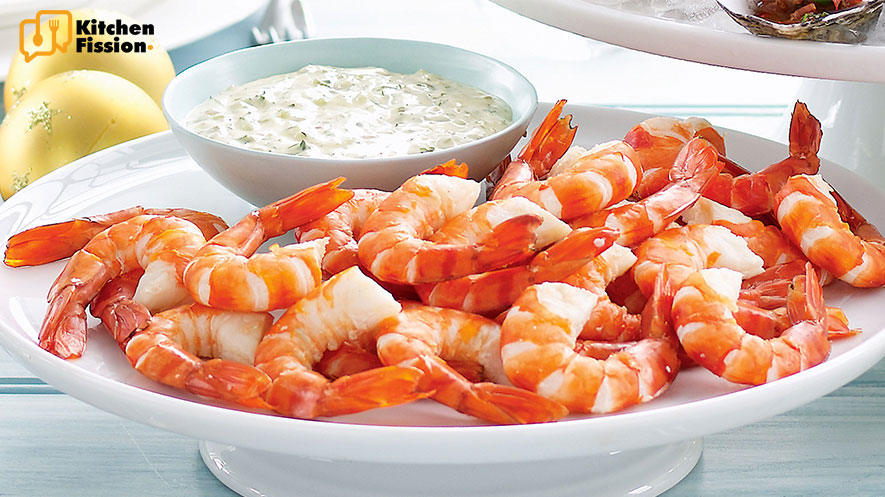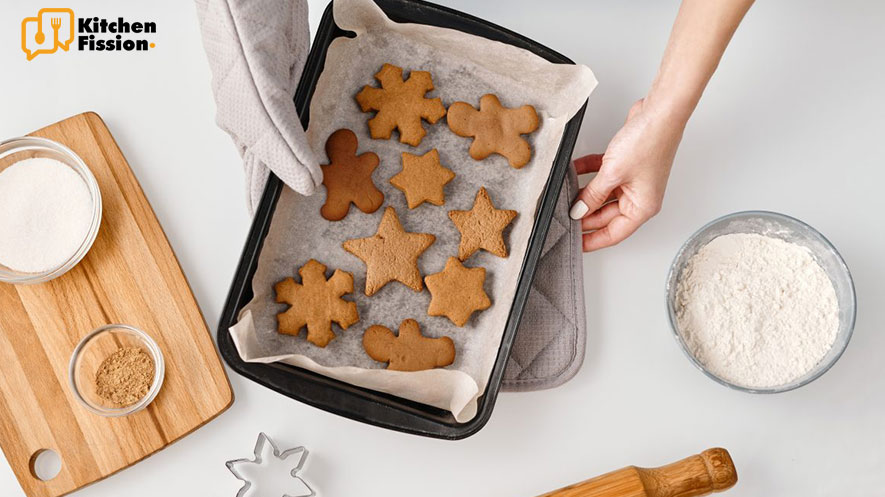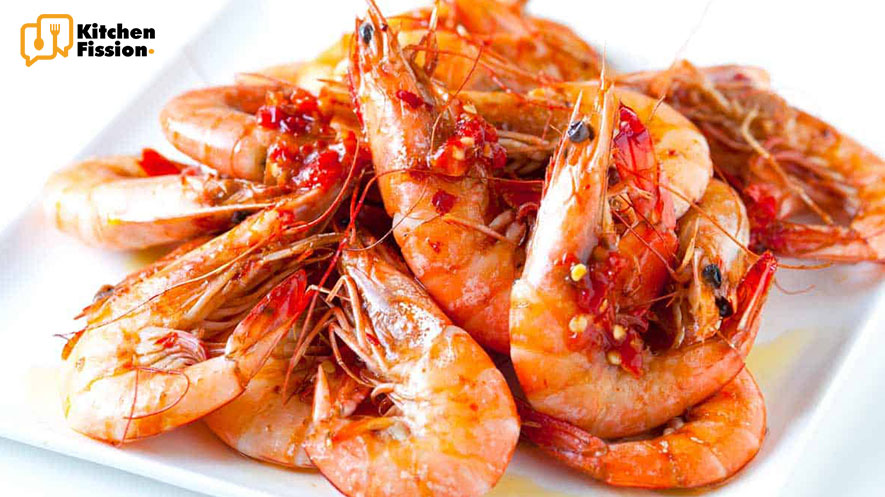Baking shrimp is a fantastic way to enjoy this delectable seafood without the fuss of frying or grilling. Whether you’re a seafood aficionado or a novice in the kitchen, these 10 tips will help you achieve perfectly baked shrimp every time. From preparation to seasoning and cooking, we’ve got you covered.
Choose the Right Shrimp:
Choosing the right shrimp for your culinary endeavors can greatly impact the taste, texture, and overall quality of your dishes. Shrimp, a versatile and popular seafood option, comes in various sizes, types, and forms. To ensure you select the perfect shrimp for your recipe, consider the following factors:
- Size Matters: Shrimp are categorized by their size count per pound, such as 16/20 or 41/50. The lower the number, the larger the shrimp. For example, 16/20 shrimp are larger than 41/50 shrimp. The size you choose should align with your dish. Larger shrimp are ideal for grilling or showcasing as the main dish, while smaller ones work well in salads or pasta.
- Fresh vs. Frozen: Fresh shrimp can be an excellent choice if you have access to a reputable seafood market. Look for shrimp that are firm, translucent, and odor-free. Frozen shrimp, on the other hand, can be just as high in quality as long as they were frozen shortly after being caught. Always check for any added preservatives or chemicals in frozen shrimp.
- Shell-On or Peeled: Shrimp can be purchased with their shells on (shell-on) or with the shells removed (peeled). Shell-on shrimp tend to have more flavor and are great for dishes where presentation is important. Peeled shrimp save preparation time and are suitable for recipes where convenience is key.
- Tail-On or Tail-Off: Shrimp can also be found with the tail left on or removed. Leaving the tail on can enhance the presentation and provide a handy grip for finger foods. Tail-off shrimp are easier to eat and may be preferred for certain dishes.
Go for Fresh Shrimp:
When it comes to selecting shrimp for your culinary creations, opting for fresh shrimp is often the best choice to enhance the flavor and quality of your dishes. Here’s why you should prioritize fresh shrimp and some tips on how to identify and handle them:
1. Superior Flavor and Texture: Fresh shrimp typically have a more pronounced and appealing flavor compared to their frozen counterparts. Their texture is also firmer and more succulent, providing a delightful eating experience. The sweetness and briny notes of fresh shrimp can truly elevate your seafood dishes.
2. Minimal Processing: Fresh shrimp have undergone minimal processing, which means they retain their natural taste and texture. They are not subjected to the freezing and thawing process that can sometimes lead to moisture loss and changes in texture.
3. Versatility in Cooking: Fresh shrimp can be used in a wide range of culinary applications. Whether you’re grilling, sautéing, boiling, or incorporating shrimp into soups and salads, fresh shrimp’s versatility shines through in various cooking methods.
4. Easy to Customize: When you buy fresh shrimp with shells on, you have the option to customize their preparation. You can decide whether to leave the shells intact for added flavor or peel them for convenience, tail-on for presentation, or tail-off for easy consumption.

Preheat Your Oven:
Preheating your oven is a crucial step in many cooking and baking processes, and it plays a significant role in achieving consistent and delicious results. Here’s why preheating is important and some tips on how to do it correctly:
Why Preheat Your Oven?
- Even Cooking: Preheating ensures that the oven reaches the desired temperature before you place your food inside. This is vital for even cooking, as the entire dish will be exposed to the intended heat level from the start.
- Proper Baking: For baked goods like cakes, cookies, and bread, preheating is essential to activate leavening agents (e.g., baking powder, yeast) at the right moment. This helps your baked items rise properly and achieve the desired texture.
- Food Safety: Preheating is crucial for cooking meat, poultry, and seafood safely. Starting with a hot oven ensures that these foods reach the necessary internal temperature to kill harmful bacteria and pathogens.
Use a Baking Sheet:
Using a baking sheet, also known as a baking tray or cookie sheet, is a fundamental kitchen technique that is essential for a wide range of cooking and baking tasks. Whether you’re preparing cookies, roasting vegetables, or baking a sheet of delicious pastries, a baking sheet is a versatile tool that can simplify your cooking process and improve your culinary results. Here’s a detailed look at why and how to use a baking sheet effectively:
Why Use a Baking Sheet?
- Even Cooking: Baking sheets provide a flat and consistent surface for cooking, which ensures even heat distribution. This is especially important for recipes that require uniform cooking, such as cookies and roasted vegetables.
- Easy Cleanup: Baking sheets are typically lined with parchment paper or silicone baking mats to prevent food from sticking. This makes cleanup much easier and minimizes the need for excessive greasing.
- Versatility: Baking sheets are incredibly versatile and can be used for a wide variety of dishes, including but not limited to cookies, sheet cakes, roasted vegetables, chicken, fish, and appetizers.
Don’t Overcrowd:
“Don’t overcrowd” is an important guideline to keep in mind when baking shrimp, as it can significantly impact the final result of your dish. When baking shrimp, whether for a simple weeknight dinner or an elegant seafood feast, following this principle ensures that your shrimp cook evenly, develop a beautiful texture, and are seasoned or flavored properly. Here’s a detailed explanation of why and how to avoid overcrowding when baking shrimp:
Reasons to Avoid Overcrowding When Baking Shrimp:
- Even Cooking: Shrimp cook quickly, and overcrowding the baking sheet or dish can result in uneven cooking. Some shrimp may be undercooked, while others may become overcooked and rubbery.
- Texture: Proper spacing allows the heat to circulate evenly around each shrimp. This ensures that they achieve a desirable texture – tender and slightly firm without being tough or mushy.
- Flavor Distribution: Overcrowding can hinder the distribution of seasonings, herbs, spices, or marinades. Proper spacing ensures that each shrimp is adequately coated, enhancing the overall flavor of the dish.

Season Thoughtfully:
Choose your favorite seasonings or marinades, but don’t overdo it. Shrimp have a delicate flavor that can be easily overwhelmed. A simple combination of olive oil, garlic, lemon, salt, and pepper works wonders.
Begin with some fundamental seasonings that complement the natural flavor of shrimp:
- Salt: A moderate amount of salt helps bring out the natural sweetness of the shrimp. Kosher salt or sea salt is a good choice.
- Black Pepper: Freshly cracked black pepper adds a subtle heat and depth of flavor.
Enhance with Aromatics:
To impart more flavor to the shrimp, consider adding aromatics such as:
- Garlic: Minced or crushed garlic cloves infuse a wonderful aromatic note into the shrimp.
- Onion: Sliced or diced onions, particularly red or shallots, can add sweetness and depth.
- Citrus: Lemon or lime zest or juice provides a refreshing citrusy tang.
Keep an Eye on Cooking Time:
Baking shrimp is a fantastic way to achieve a succulent and flavorful dish without the hassle of constant monitoring that comes with stovetop cooking. However, achieving perfectly baked shrimp depends largely on one crucial factor: keeping a close eye on cooking time. Let’s delve into the importance of timing when baking shrimp and how to ensure your shrimp come out just right.
1. The Art of Baking Shrimp:
Baking shrimp offers several advantages, including even cooking and minimal hands-on attention. Here’s a basic process to follow:
- Preheat Your Oven: Start by preheating your oven to the recommended temperature, typically around 375-400°F (190-200°C). Preheating ensures that the shrimp start cooking immediately when they enter the oven.
- Prepare the Shrimp: Whether you’re using fresh or frozen shrimp, it’s essential to clean, peel, and devein them as needed. You can also marinate or season the shrimp to your preference.

Use a Meat Thermometer:
Using a meat thermometer when baking shrimp is a simple yet crucial step to ensure that your shrimp are perfectly cooked and safe to eat. Shrimp, like other types of meat and seafood, can be easily overcooked, leading to a tough and rubbery texture. To achieve tender, succulent baked shrimp, follow these guidelines on how to use a meat thermometer:
- Select the Right Thermometer:
- Ensure you have a reliable food thermometer. Digital instant-read thermometers are ideal for this purpose as they provide quick and accurate readings.
- Preheat Your Oven:
- Preheat your oven to the desired temperature as specified in your recipe. Most baked shrimp recipes call for a temperature between 350°F (175°C) and 400°F (200°C).
- Prepare the Shrimp:
- Clean and devein your shrimp if necessary, and season them according to your recipe. You can marinate them or simply season with salt, pepper, and your preferred spices.
- Arrange the Shrimp:
- Arrange the seasoned shrimp on a baking sheet or in an oven-safe dish. Make sure they are in a single layer to ensure even cooking.
- Insert the Meat Thermometer:
- Insert the meat thermometer into the thickest part of one of the largest shrimp. Ensure that the tip of the thermometer does not touch the baking sheet or dish, as this can affect the accuracy of the reading.
- Set Your Desired Temperature:
- Most shrimp recipes recommend cooking until the internal temperature of the shrimp reaches 145°F (63°C). However, you can adjust this based on your personal preference. For slightly firmer shrimp, you might aim for 140°F (60°C).
Opt for a Broil Finish:
Opting for a broil finish when baking shrimp is a fantastic technique that adds a delightful crispy texture and a burst of flavor to your dish. Broiling is a high-heat cooking method that quickly sears the top of the shrimp, caramelizing its surface and creating an appealing contrast to the tender interior. Here’s how to incorporate a broil finish when baking shrimp:
- Prepare and Season the Shrimp:
- Begin by cleaning and deveining your shrimp if necessary. Season them with your preferred spices, herbs, and a drizzle of olive oil to add flavor.
- Preheat Your Broiler:
- Set your oven’s broiler to high heat and allow it to preheat for a few minutes. The broiler element is typically located at the top of the oven.
- Choose the Right Pan:
- Use an oven-safe pan or baking dish that can withstand the high heat of the broiler. A cast-iron skillet or a broiler-safe baking sheet with raised edges works well.
- Arrange the Shrimp:
- Place the seasoned shrimp in a single layer in the prepared pan or dish. Ensure they are not crowded to allow for even cooking and browning.
Serve Immediately:
“Serving immediately” is a fundamental concept in cooking and culinary preparation that emphasizes the importance of serving a dish promptly after it has been cooked or prepared to ensure the best flavor, texture, and overall dining experience. Here’s a detailed explanation of why it’s essential to serve dishes immediately:
- Preserves Optimal Flavor and Temperature:
- Many dishes, including those with delicate ingredients like seafood or freshly cooked vegetables, are at their peak flavor and temperature right after cooking. Serving immediately ensures that you enjoy the full, vibrant taste of the ingredients while they are still fresh and hot.
- Maintains Food Texture:
- Certain foods, such as fried items, have a crisp texture when first prepared. Allowing them to sit can result in sogginess or loss of crunch. Serving immediately helps maintain the desired texture of your dish.
- Enhances Presentation:
- Freshly cooked dishes are visually appealing. Ingredients are often vibrant in color, and their arrangement on the plate can be more artistic when served immediately. This presentation can make your meal more enticing and enjoyable.
- Avoids Overcooking:
- Over time, the residual heat from cooking can continue to cook the food even after it’s been removed from the heat source. Serving promptly prevents overcooking, which is particularly important for ingredients like seafood and steak.
Conclusion:
With these 10 tips, you’re well on your way to creating perfectly baked shrimp that will impress your family and guests. Experiment with flavors and seasonings to find your favorite combination, and savor the delicious results of your culinary adventures. Happy baking!

